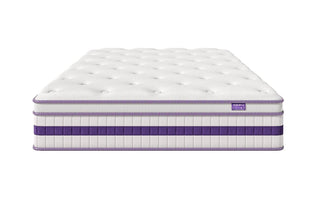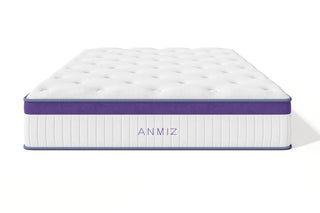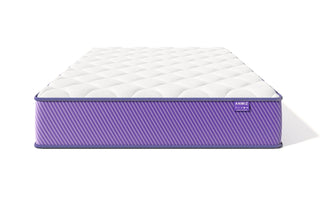Best Memory Foam Mattress
We receive free products to review and participate in affiliate programs, where we are compensated for items purchased through links from our site. See our disclosure page for more information.
From high-end TEMPUR-Pedic mattresses to more affordable options from Amazon, our team has tested a wide variety of memory foam beds. With so many choices available—each promoting features like pressure relief, motion isolation, contouring, and affordability—how do you know which ones truly stand out?
With over seven years of experience reviewing sleep products, we’ve tested hundreds of mattresses in our studio. We’ve combined this extensive knowledge with the expertise of our Chief Medical Product Tester, Dr. Hannah Habeeb, DPT, to curate this list of our top memory foam picks.
We considered a range of factors in our selection process, including luxury, value, and comfort. Our final list of the best memory foam mattresses offers options for just about everyone. Whether you’re a side sleeper seeking support and softness, a light sleeper with a restless partner, or someone who enjoys the feeling of being "hugged" by their mattress, you'll likely find a suitable choice among the beds below.
Our Verdict: What’s the Best Memory Foam Mattress?
Our team of expert reviewers selected the Nectar as the best memory foam mattress. It delivers the classic slow-moving feel of memory foam while maintaining strong support. The mattress contours to your body for pressure relief without trapping heat, and it scored surprisingly high in responsiveness and cooling, which is uncommon for an all-foam mattress.
The Best Memory Foam Mattresses
- Nectar Mattress – Best Memory Foam Mattress Overall
- Leesa Mattress – Best Memory Foam Mattress for Back Sleepers
- DreamCloud Mattress – Best Memory Foam Mattress for Side Sleepers
- WinkBeds Mattress – Best Memory Foam Mattress for Combo Sleepers
- Saatva Mattress – Best Luxury Memory Foam Mattress
- Brooklyn Bedding Mattress – Best Memory Foam Mattress for Couples
- Bear Mattress – Best Affordable Memory Foam Mattress
- Nolah Mattress – Best King Memory Foam Mattress
- Brooklyn Bedding Mattress – Best Firm Memory Foam Mattress
How We Tested and Selected the Mattresses
Compare the Best Memory Foam Mattresses
Best Memory Foam Mattresses: Our Testing Experience
Nectar Mattress – Best Memory Foam Mattress Overall

Leesa Mattress – Best Memory Foam Mattress for Back Sleepers
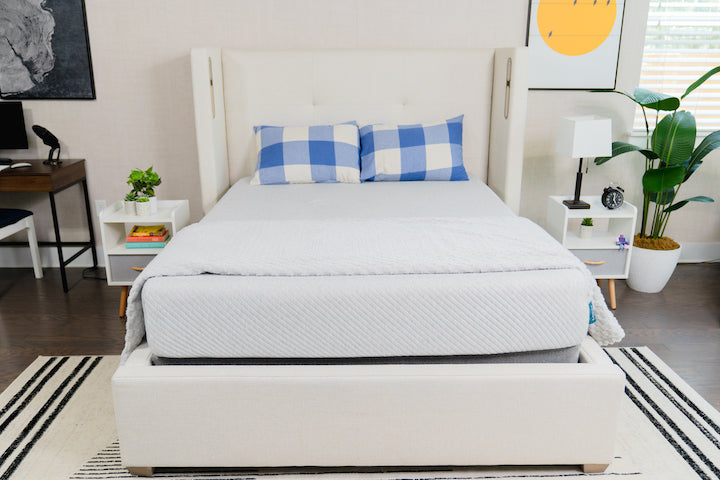
DreamCloud Mattress – Best Memory Foam Mattress for Side Sleepers
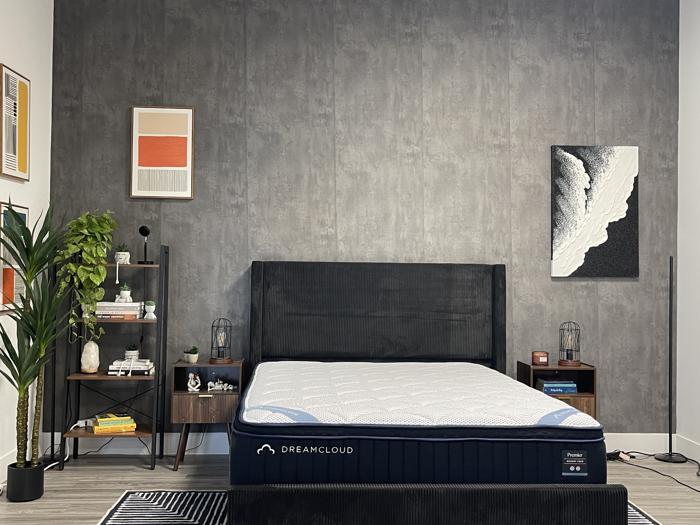
WinkBed Mattress – Best Memory Foam Mattress for Combo Sleepers

Saatva Classic – Best Luxury Memory Foam Mattress

Brooklyn Bedding Mattress – Best Memory Foam Mattress for Couples

Brooklyn Bedding Mattress
Bear Mattress – Best Affordable Memory Foam Mattress
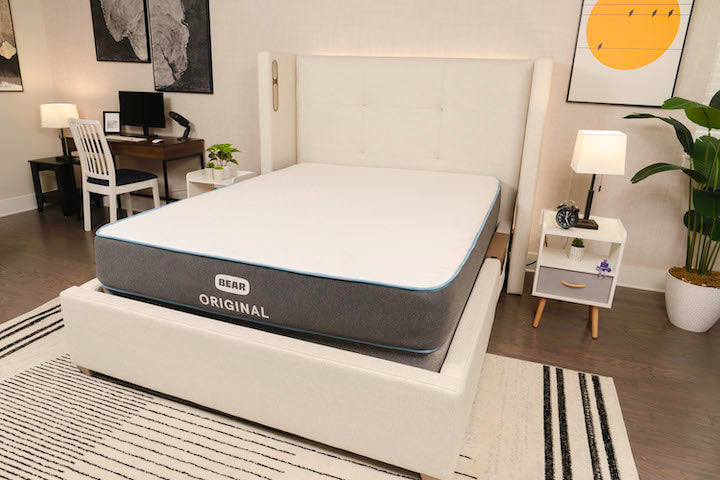
Nolah Natural – Best King Memory Foam Mattress

Brooklyn Bedding Mattress – Best Firm Memory Foam Mattress
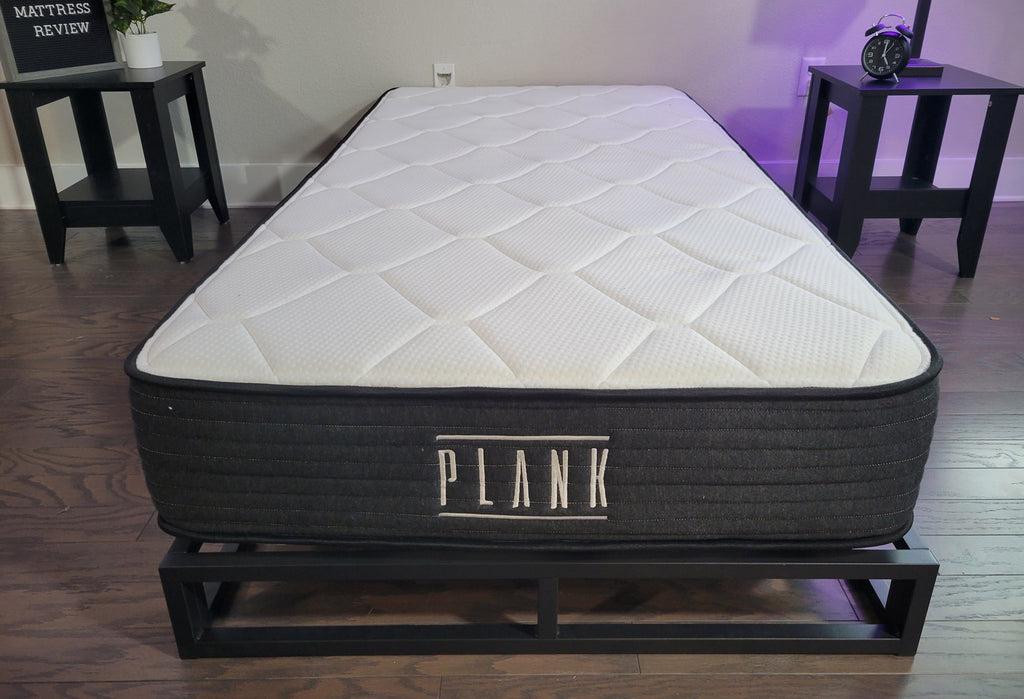
Other Memory Foam Mattresses We Researched
Memory foam mattresses are among the most popular and varied, making it nearly impossible to create an exhaustive list of all the great options out there. However, here are some other memory foam beds we reviewed and liked but didn’t quite make the final cut:
- Nectar Luxe – Nectar offers a wide range of memory foam mattresses, with its original model featured here as an affordable yet high-quality option. The Nectar Luxe, on the other hand, is a plush memory foam mattress with multiple specialized foam layers and a super-cooling fabric cover. It's much pricier than the Nectar Classic, so it may not fit everyone’s budget. But if you’re looking for something softer, more pressure-relieving, and cooler than the Nectar Classic, the Nectar Luxe could be worth considering.
- DreamCloud Memory Foam – The DreamCloud Memory Foam is a more budget-friendly option compared to the DreamCloud Premier Memory Foam. While both beds offer a similar feel, the original model is slightly firmer and costs a bit less. We’ve reviewed a lot of foam mattresses on this list, and since we’ve recently tested the DreamCloud Premier Memory Foam, we opted for it over the original version.
- Casper The One – Casper’s flagship memory foam mattress, "The One," provides a balanced foam feel with some responsiveness, making it easier to move on the surface. Its zoned support system offers firmer support in the center for lumbar support, which many back sleepers will appreciate. However, it’s not supportive enough for those over 230 pounds or for stomach sleepers.
How We Tested the Best Memory Foam Mattresses
In compiling this list of the best foam beds, we focused on three categories: edge support, temperature regulation, and cooling. I’ll dive a little deeper into each below, going over why they’re important and how we test each metric.
Edge Support
A mattress with good edge support won’t sag at the perimeter when you lie down or sit on it, which is especially important for older adults and those with mobility concerns who need extra assistance getting in and out of bed. To test edge support, we simulate these scenarios and observe how the sides of the bed perform under weight. If there’s significant sinkage that makes us feel like we might slide off the edge, we give the bed a lower score in this category.
Generally, memory foam mattresses tend to lag behind hybrids in this area, as they are more prone to sinking. If edge support is a critical factor for you, consider a mattress with reinforced innerspring coils to provide more structure along the edge. However, for those who prefer an all-foam bed, it’s not impossible to find one with good edge support. Many brands have made improvements to the perimeter of their memory foam mattresses, especially those made with dense, durable foams like latex.
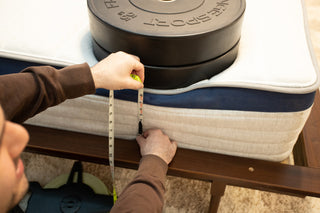
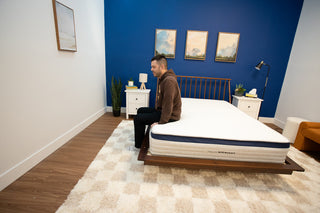
Temperature Regulation
Studies show that a cool sleeping environment helps you fall asleep faster and promotes more restorative rest. Unfortunately, foam mattresses are known for trapping heat, as their dense structure doesn’t allow for much airflow. However, many mattress manufacturers have found ways to address this issue, allowing memory foam enthusiasts who sleep hot to rest without overheating. For example, some brands infuse cooling gel into the foam layers or cover the bed with breathable materials like bamboo or cotton.
To test temperature regulation, we first check if the mattress is cool to the touch, which is often the case when it has a cooling cover. Then, we use a thermal gun to take the initial surface temperature. After lying on the mattress for about seven minutes, we assess whether it heats up beneath us. Once the seven minutes are up, we take another surface temperature reading.
We evaluate the increase in temperature and use it to assign a score out of five. A typical cooling performance results in a 6- or 7-degree increase, while exceptional cooling stays below a 5-degree rise. If the temperature increase exceeds this, the mattress might not be ideal for cooling. We also factor in our subjective experience to help refine the final score.
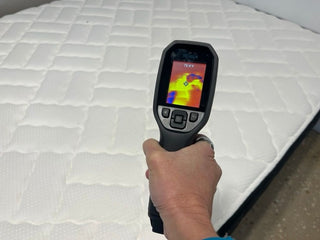
Motion Isolation
Memory foam mattresses are highly regarded for their motion isolation, which refers to how well a bed absorbs movement before it spreads across the surface. The slow-moving, doughy feel of traditional memory foam is particularly effective for this, making it a popular choice for couples. According to our Chief Medical Advisor, Dr. Raj Dasgupta, “good motion isolation can be a marker of a well-constructed, high-quality mattress.”
We test a mattress’s motion isolation abilities in two ways. First, we conduct the water glass test: we place a glass of water on one side of the bed and observe how much the water is disturbed when pressing into the foam. To simulate real-life use, we then have testers share the bed, rating how much movement they feel as the other tester gets in and out of bed or changes positions. The more movement testers feel, the lower the final motion isolation score will be.

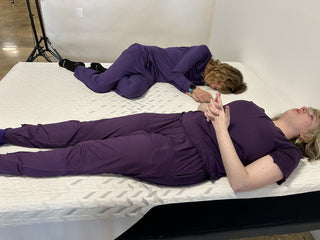
What Else Is Important When Buying a Memory Foam Mattress?
Aside from the three test factors outlined above, there are some other areas you might want to consider before purchasing a new mattress.
Sleeping Position
Your sleeping position plays a key role in determining whether a memory foam mattress is right for you and how well it provides the necessary balance of support and comfort. You should also consider the amount of memory foam in the mattress, as most all-foam beds use a variety of foams in their multi-layered construction. The right amount of memory foam varies depending on your sleeping position, as different positions benefit from different balances of softness and support.
- Stomach sleepers generally need less pressure relief and must avoid having their hips sink too deeply. As such, they typically need only one or two inches of memory foam and may be better suited for a hybrid mattress.
- Back sleepers need their hips to sink slightly so the foam can conform to the body’s curves, providing proper lumbar support. Two to three inches of memory foam should provide the right amount of support.
- Side sleepers usually require more pressure relief due to the nature of their position, especially if they are heavier. Three to five inches of memory foam will offer the best comfort and support for them.
Additionally, the mattress's firmness is an important factor. Most sleepers find medium-firm mattresses to be comfortable, as studies show this firmness is optimal for spinal alignment and preventing back pain. This firmness is ideal for back sleepers, while stomach sleepers may need something firmer for extra support, and side sleepers may prefer something softer for better contouring. Be sure to check reviews, as customer feedback will often reveal whether the mattress is softer or firmer than advertised.
Body Type
Your body type and weight also play a significant role in determining the best mattress for you. Individuals with smaller bodies may find a mattress too firm, leading to discomfort in areas like the hips and lower back. On the other hand, those who are of average weight or heavier might sink too deeply into a mattress that feels too soft, preventing proper support.
Dr. Raj Dasgupta suggests, “Sleepers over 230 pounds need a firmer, more supportive mattress, while sleepers lighter than 130 pounds should look for something softer with more pressure relief.” This recommendation may vary depending on your preferred sleeping position, as mentioned earlier, so it’s important to find a mattress that strikes the right balance of comfort and support for your body type.
Pressure Relief
Memory foam mattresses with softer, cushier feels are often excellent at providing pressure relief, making them particularly appealing to side sleepers and those looking for a bed that contours to the body. For most people, sleep position is the key factor in determining how much pressure relief and contouring you need in a memory foam mattress. Side sleepers, in particular, should look for beds with more contouring foams, as these help prevent soreness or numbness on the side of the body that presses into the mattress.


To test pressure relief, we gather testers of various body types to provide a well-rounded assessment of a mattress’s pressure-relieving capabilities. We have them lie on their back and side on the bed, while a specialized mat records the pressure buildup on each part of their body, generating a color-coded map. Blue and green indicate low pressure, while red and yellow signal high pressure. Using these results, along with feedback from the testers, we evaluate how effectively the bed relieves pressure.
Response
Responsiveness is closely related to bounce and refers to how easily you can move on top of a mattress. Generally, slow-moving memory foam results in low responsiveness, which is why most all-foam mattresses aren’t recommended for combination sleepers or sexually active couples. However, you may have noticed that many mattresses on our list earned high responsiveness scores. This is because, depending on the foam's density and construction, some memory foam mattresses can offer a springy surface that rivals the responsiveness of hybrid or innerspring beds.

We test responsiveness by moving around on the mattress surface. We roll, shift positions, and transition between sleeping styles, noting how easily we can move from one to the next. If at any point we feel “stuck” or have to exert extra effort, we deduct points from the responsiveness score. A mattress with particularly good bounce will score between 4 and a perfect 5/5.
Durability
Memory foam mattresses can vary in durability, largely depending on the quality of construction. To ensure longevity, the firmest, densest foam layers should be placed at the bottom for support. Over time, softer top layers may show signs of sagging or indentations, but this can be minimized by rotating the mattress every few months.
To assess a mattress's durability, we recommend checking reviews from long-term owners and our detailed evaluations of the mattress’s construction and edge support. Strong edge support is often a good indicator that the mattress is less likely to sag prematurely. Additionally, the length of the manufacturer’s warranty can give you insight into how long they expect the mattress to last.
Company Policies
When considering a mattress, it's important to review the terms and conditions of its warranty. Most mattresses come with a 10-year warranty, which should cover defects or issues that arise during the bed's lifetime. However, it's essential to take good care of your mattress, so using a mattress protector and ensuring it's placed on a suitable bed frame can help maintain its condition.
Additionally, most bed-in-a-box mattresses offer a sleep trial, allowing you to try the mattress before fully committing. If you decide it's not right for you, initiating a return within the trial period typically ensures you’ll receive a full refund.
Best Memory Foam Mattress FAQs
References
- Harding, E., et al. (2019). The Temperature Dependence of Sleep.
- Radwan, A., et al. (2015). Effect of different mattress designs on promoting sleep quality, pain reduction, and spinal alignment in adults with or without back pain; systematic review of controlled trials.



